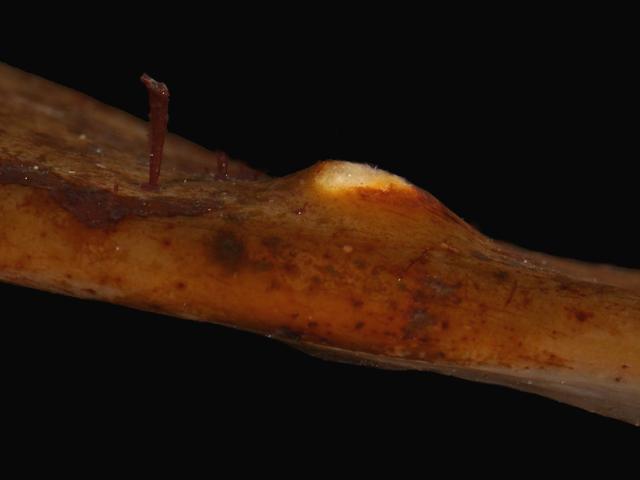
APHOTOMARINE
An educational resource dedicated mainly to the photography
and diversity of marine life that can be found in coastal waters
and intertidal areas of Great Britain and Ireland by David Fenwick.

Himanthalia elongata, Thong Weed, thallus gall possibly
caused by an alga. Penzance, 09.05.20. (Algal galls)
Scroll down and rollover titles to change screen image or click on title to view image.
Agent possibly algae
Himanthalia elongata
- gall on old thallus 1
Himanthalia elongata
- gall on old thallus 1
Agent possibly algae
Himanthalia elongata
- galls on old thallus 1
Agent possibly algae
Himanthalia elongata
- galls on old thallus 2
Agent possibly algae
Himanthalia elongata
- with 1.0 mm division rule 1
Agent possibly algae
Himanthalia elongata
- gall close-up 1
Agent possibly algae
Himanthalia elongata
- gall close-up 2
Agent possibly algae
Himanthalia elongata
- egg approx. 350 x 275 um / nematode ? / mite ? 1
Agent possibly algae
Himanthalia elongata
- egg approx. 350 x 275 um / nematode ? / mite ? 2
Agent possibly algae
Himanthalia elongata
- algal cells under microscope 1
Agent possibly algae
Himanthalia elongata
- algal cells under microscope 2
Agent possibly algae
Himanthalia elongata
- algal cells under microscope 3
Agent possibly algae
Himanthalia elongata
- with 0.1 mm division rule 1
Agent possibly algae
Himanthalia elongata
- with 0.1 mm division rule 2
An old thallus of Himanthalia elongata, Thong Weed, was found that was partially covered with small red and brown epiphytes. It had galls frequently spaced along its length and sometimes smaller galls along its edge. Some galls showed signs of decay and were soft and when pressed revealed what look like eggs of varying sizes, these were white under a microscope ring light, and may possibly be from a nematode. The galls on Thong Weed are placed here with the algal galls because of the evidence produced, see images above. The thallus was found at Albert Pier reef, Penzance, Cornwall, 09.05.20.
The agent causing the gall here is is possibly a brown algal endophyte, and could be a species of Streblonema. The egg-like object still need to be identified, the eggs are approx. 350 x 275 um in size, see above.
What might be happening here is that the contraceptacles of the algae have become infected / innoculated, for instance either by an endophytic algae or nematode. The algae has responded, producing a gall. If this is the case then this type of gall could have many potentail agents, e.g. further algal species, marine fungi or bacteria, the algae being susceptible because of its age.

The main objective of this website is in furthering environmental awareness and education through the medium of photography. To increase awareness and access to the wildlife of the region and help
people find and identify it. Sometimes the difference between species is obvious but many species can only be determined by observing microscopic characteristics that are specific to any one species.